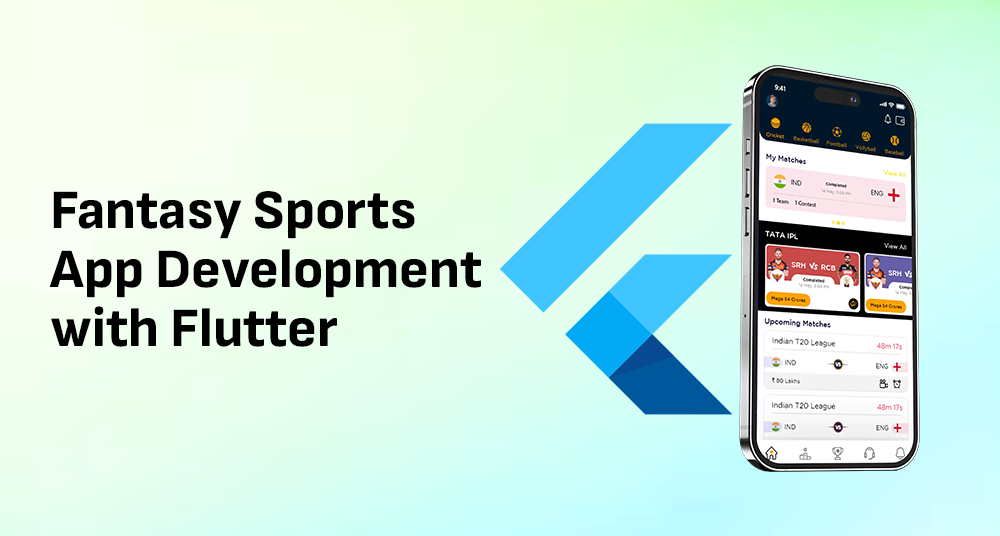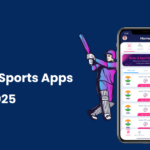Fantasy sports have seen a massive surge in popularity over the last decade. Apps like Dream11, FanDuel, and ESPN Fantasy have gained widespread attention, enabling users to create virtual teams based on real-world sports performances. With this increasing demand, fantasy sports application development can be a lucrative venture for app developers.
Flutter, a UI toolkit developed by Google, allows developers to create natively compiled applications for mobile, web, and desktop from a single codebase. In this comprehensive guide, we will explore the process of Fantasy Sports App Development with Flutter and discuss all the necessary steps required to bring your fantasy sports application to life.
What is a Fantasy Sports App?
A Fantasy Sports App is a mobile or web-based application that allows users to create and manage their own fantasy sports teams. In fantasy sports, players draft real-life athletes from a specific sport (such as football, basketball, baseball, or soccer) and earn points based on the actual performance of those athletes in real-world games.
Key Features of a Fantasy Sports App
- User Registration and Profile Management: Users can sign up, log in, and manage their profiles.
- Team Creation: Users can form teams based on real-world players.
- Leaderboards and Contest Tracking: Users can track their rankings and participate in contests.
- Rewards System: Users can win cash prizes or virtual points depending on their performance.
Best Backend Technologies for a Fantasy Sports Application Development
A strong backend is crucial to ensuring your fantasy sports app functions efficiently and smoothly. Here are the best backend technologies you can integrate for your fantasy sports application:
- Node.js: A popular backend technology for building scalable apps, providing fast and efficient performance.
- Ruby on Rails: Known for its speed in building web apps, Ruby on Rails is a solid choice for backend development.
- Django (Python): Django offers a clean and robust structure, ideal for complex applications like fantasy sports apps.
- Firebase: A powerful BaaS (Backend-as-a-Service) offering features like authentication, real-time database, and cloud storage.
- AWS (Amazon Web Services): AWS offers a scalable, reliable infrastructure that supports the backend needs of large-scale apps.
You may also need to integrate APIs that provide live sports data such as player statistics, match results, and sports news.
Why Are Backend Technologies Required Alongside Flutter?
Flutter focuses on creating the front-end user experience, but a fantasy sports app is more than just a sleek interface. The app needs to fetch and display live sports data, process user transactions, store data, and perform complex logic for ranking and team management.
For example:
- You need real-time sports data to update the app’s content.
- User information, team data, and transaction histories must be stored in databases.
- Payment gateways are required for users to buy into contests or receive payouts.
All these functionalities require backend technologies that work seamlessly with Flutter to ensure a dynamic, efficient, and interactive app experience.
Why Choose Flutter for Fantasy Sports Application Development?
Flutter has gained significant popularity among mobile developers, and for good reason. When building a fantasy sports app development with Flutter offers numerous advantages:
Single Codebase for Multiple Platforms
Flutter allows you to write one codebase for both Android and iOS apps. This can significantly reduce development time and cost compared to developing separate native apps for each platform.
Fast Development
Thanks to features like Hot Reload, developers can instantly see changes in the app, speeding up the iteration and testing process.
Customizable Widgets
Flutter’s customizable widgets allow for a seamless design experience, enabling developers to create a polished UI tailored to the needs of a fantasy sports application.
Performance
Flutter’s performance is near-native, as it uses Dart, which is compiled directly into native code. This makes it a great choice for performance-intensive apps like fantasy sports applications that need to handle live data.
Rich Ecosystem
Flutter has an extensive ecosystem of libraries and plugins that help developers integrate functionalities like authentication, payments, notifications, and more into the app easily.
Cost-effective Development
Fantasy Sports App Development with Flutter reduces the need for separate Android and iOS development teams, making it a more cost-effective option for startups and entrepreneurs.
Essential Features of a Fantasy Sports App
For a successful fantasy sports app development with Flutter, you need to ensure that your fantasy sports platform offers key features that enhance user engagement and usability:
User Authentication
Secure and easy sign-up/login options with social media integration (Google, Facebook) or email.
Team Management
Users should be able to create, manage, and modify their fantasy teams seamlessly. You should also allow them to make substitutions and manage players throughout the season.
Contests & Leagues
Allow users to join different contests and leagues, with the ability to track standings, rewards, and rankings.
In-App Payments
Enable users to pay for contest entry or receive winnings directly in the app.
Push Notifications
Notify users about updates on player performance, changes in their fantasy teams, and upcoming contests.
Admin Panel
Admin features like managing user accounts, contests, payouts, and real-time updates.
Social Sharing
Users should be able to share their team rosters, performance, and achievements with friends or on social media platforms.
Setting Up Your Development Environment
Before diving into the Fantasy Sports Application development process, ensure you have all the tools and technologies in place:
- Install Flutter and Dart: Download and install the Flutter SDK from Flutter’s official website. Flutter uses Dart as the programming language, so ensure that Dart is also installed.
- Set up Android Studio or VS Code: Choose an IDE like Android Studio or Visual Studio Code, which supports Flutter and Dart development. Install the necessary Flutter and Dart plugins.
- Create a Firebase Project (if using Firebase for Backend): If you choose Firebase as your backend, create a Firebase project and set up Firebase services such as authentication, Firestore, and Firebase Cloud Functions.
- Choose a Sports Data API: Find an API that provides real-time sports data, such as player stats, match results, etc.
Steps to Build a Fantasy Sports App Development with Flutter
Step 1: Create a New Flutter Project
Create a new project in Flutter using the Flutter create command. This will generate a boilerplate project with the necessary folder structure.
Step 2: Design the UI/UX for Your App
The user interface is crucial for engaging users. Use Flutter’s rich set of pre-built widgets like Container, Column, and Row to build your app’s interface. Prioritize responsiveness, intuitive navigation, and a visually appealing layout.
Step 3: Backend Setup and Sports Data Integration
Configure your backend, whether it’s Firebase, AWS, or any other technology, and integrate sports data from APIs. Ensure that the data is refreshed in real-time and that the app can handle large volumes of users.
Step 4: Implementing User Authentication and Profiles
Set up Firebase Authentication or any other service for creating user accounts and logging in. Implement profile management features so users can view and edit their personal information, teams, and contest history.
Step 5: Building Core Features
Develop the primary features of your app such as creating teams, joining contests, tracking performance, and displaying rankings. You can use Flutter’s built-in state management solutions like Provider or Riverpod to manage the app’s state.
Step 6: Integrating Payment Gateways
For real-money contests, integrate secure payment gateways like Razorpay, Stripe, or PayPal to handle deposits and withdrawals.
Step 7: Testing Your Fantasy Sports App
Testing is a crucial step. Ensure that your app works smoothly across multiple devices and platforms. Focus on performance, ensuring that data updates in real-time without glitches.
Step 8: Publishing Your App
Once the app is complete and tested, publish it on Google Play Store and Apple App Store. Follow the platform-specific guidelines to ensure a smooth submission process.
Step 9: Post-launch Monitoring and Updates
Once launched, continuously monitor the app’s performance. Gather user feedback and push regular updates to improve the app.
Why Dream11 is a Perfect Example of a Fantasy Sports Platform Built with Flutter Framework?
Dream11, one of the most popular fantasy sports platforms, serves as an excellent example of how Flutter can be used to build a successful fantasy sports app. Dream11’s user-friendly design, seamless integration of live data, and scalable backend are some key features that make it stand out.
The app’s fluid performance, availability on both Android and iOS and ease of use are likely powered by the efficiency of Flutter. Its backend handles millions of users, ensuring real-time performance tracking and smooth payments, which makes Dream11 an exemplary fantasy sports platform.
Final Words
Fantasy Sports App Development with Flutter is a highly efficient and cost-effective solution for developers. Flutter’s cross-platform capabilities, coupled with a robust backend, allow for the rapid development of complex, performance-driven applications. The comprehensive guide provided above outlines all the essential steps to build a successful fantasy sports application development project. From designing the user interface to integrating payment gateways, the process can be both exciting and rewarding for developers.
By following this guide, you can go with Fantasy Sports Application Development which offers an engaging experience for users, ensuring they keep coming back to manage their teams and participate in contests. Whether you’re targeting cricket, football, or any other sport, Flutter provides the tools you need to bring your fantasy sports platform to life.



